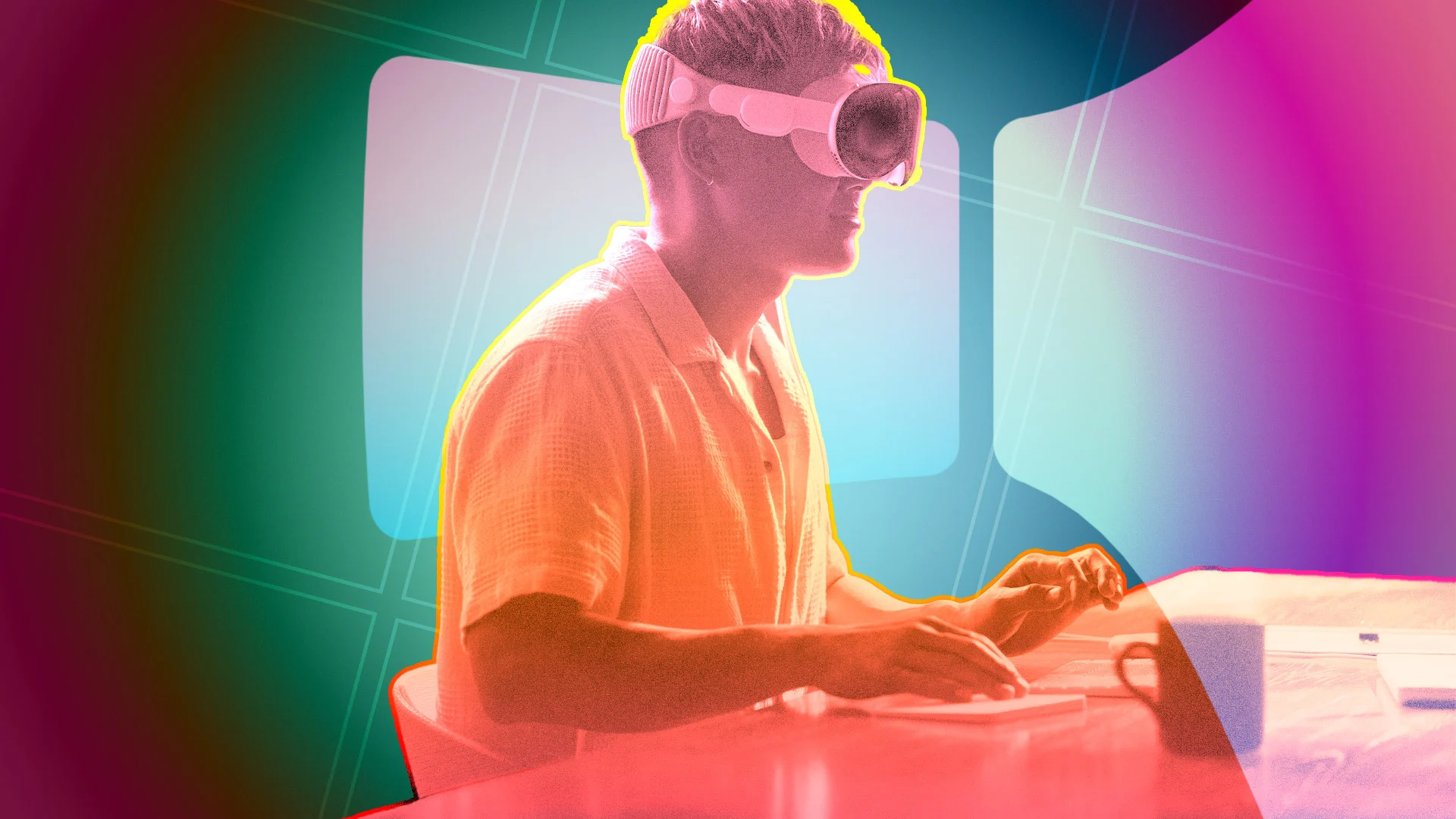The digital landscape is rapidly evolving, and at its forefront lies spatial computing, a transformative paradigm that seamlessly blends digital content with our physical world. With the advent of groundbreaking devices like Apple Vision Pro, the lines between augmented reality (AR) and virtual reality (VR) are blurring, ushering in an era where businesses can interact with data, collaborate, and train in ways previously confined to science fiction. This shift is not just about fancy headsets; it’s a fundamental redefinition of human-computer interaction, and for custom software development, it presents an unprecedented opportunity.
What is Spatial Computing?
At its core, spatial computing allows digital content to be embedded directly into physical space, enabling natural, hands-free interactions through gestures, voice, and real-world tracking. Unlike traditional flat-screen interfaces, it leverages 3D mapping, computer vision, AI, and IoT to understand and interact with the physical environment. This means that a virtual architectural model can be placed and walked around in a real room, or a complex industrial machine can be overlaid with real-time diagnostic data.
The Apple Vision Pro: A Catalyst for Enterprise Innovation
Apple Vision Pro, with its powerful visionOS, eye-tracking, and gesture control, is a significant leap forward in making spatial computing accessible and intuitive. While it’s captured consumer imagination, its true potential lies in the enterprise sector. Businesses are now exploring how this “spatial computer” can revolutionize various aspects of their operations:
- Immersive Training and Education: Imagine medical students performing virtual surgeries with haptic feedback, or factory workers learning complex assembly procedures with step-by-step 3D overlays directly on the equipment. Custom software can create highly realistic, interactive training simulations that improve knowledge retention and skill development in safe, controlled environments.
- Enhanced Collaboration and Remote Work: Spatial computing enables distributed teams to collaborate in shared virtual spaces, manipulating 3D models, reviewing designs, and conducting meetings as if they were in the same room. Custom applications can facilitate real-time data visualization, enabling better decision-making and breaking down geographical barriers.
- Product Design and Prototyping: Designers and engineers can visualize and interact with 3D prototypes in their physical space, making instant modifications and sharing concepts with stakeholders in an incredibly intuitive way. This can significantly reduce development cycles and costs.
- Sales and Marketing: Virtual showrooms allow customers to explore and interact with products in depth from anywhere, enhancing the shopping experience and driving informed purchase decisions. Custom AR applications can enable virtual try-ons for fashion or furniture, creating engaging and personalized brand interactions.
- Field Service and Maintenance: Technicians can receive real-time, context-aware instructions and diagrams overlaid onto machinery, guiding them through complex repairs and minimizing downtime. This boosts efficiency and reduces errors.
- Data Visualization: Transforming complex datasets into immersive 3D visual narratives allows businesses to identify hidden trends and patterns more intuitively, leading to better insights and strategic decisions.
The Rise of Custom Software in a Spatial World
While off-the-shelf applications for spatial computing will emerge, the true power of this technology for businesses lies in custom software development. Here’s why:
- Tailored to Specific Needs: Every business has unique workflows, data structures, and operational challenges. Custom spatial software can be precisely designed to address these specific requirements, delivering unparalleled efficiency and impact.
- Integration with Existing Systems: Seamless integration with enterprise resource planning (ERP), customer relationship management (CRM), and other legacy systems is crucial for maximizing the value of spatial computing. Custom development ensures these connections are robust and functional.
- Competitive Advantage: Early adopters who invest in custom spatial solutions will gain a significant competitive edge, revolutionizing their services, products, and internal processes.
- Optimized User Experience: Developing bespoke applications allows for a highly optimized user experience (UX) and user interface (UI) that accounts for the unique interaction paradigms of spatial computing (eye-tracking, gestures, voice), ensuring intuitive and productive use for employees and customers alike.
- Data Security and Compliance: Custom solutions offer greater control over data security and compliance with industry-specific regulations, which is especially critical given the sensitive nature of some spatial data.
Challenges and Opportunities
Developing custom software for spatial computing is not without its challenges. The learning curve for new development paradigms like visionOS and frameworks like RealityKit, the need for specialized hardware and infrastructure, and the evolving nature of the technology itself all present hurdles. Data privacy and security concerns are also paramount, given the vast amounts of personal and environmental data these devices collect.
However, these challenges are dwarfed by the immense opportunities. As the technology matures and becomes more accessible, the demand for skilled spatial computing developers will skyrocket. Businesses that embrace this shift now, partnering with experienced custom software development firms, will be well-positioned to unlock unprecedented levels of innovation, efficiency, and competitive advantage.
The Future is Spatial
The era of spatial computing is here, and it’s poised to redefine how we work, learn, and interact with the digital world. For custom software development, this is more than just a new platform; it’s a canvas for creating truly immersive, intuitive, and impactful solutions that will shape the future of business across every industry. The time to explore and invest in custom spatial software is now, to ensure your business isn’t just watching the future unfold, but actively building it.


